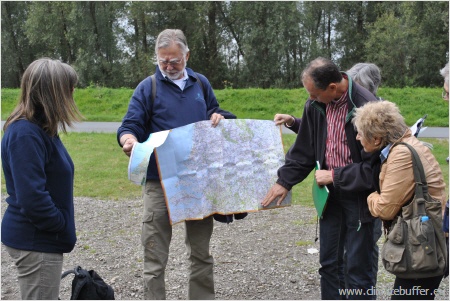Rhine & Meuse Delta
Introduction
As over 50% of the Netherlands lie below sea level, defending the country against flooding is a high national priority. The Rhine – Meuse – Scheldt delta covers the south-west area of the Netherlands and amounts to 124,225ha. During the last century, the Netherlands has lost many of its river estuarine and coastal habitats, often due to land reclamation and coastal protection measures since 1970, by a major tidal sluice at the estuary mouth: the Haringvliet Sluice. Economic development, including a world-class port, agricultural need for freshwater and flood risk management for millions are the main drivers of recent changes. These changes reduced tidal ranges from circa two meters to mere centimeters. It also reduced salt water and brackish water input, and modified groundwaters. This has left its mark upon associated biodiversity.

Introducing the Biesbosch
(Photo: Ralf Schulte/NABU)
The estuaries of the rivers Rhine and Meuse is among the most densely populated areas in the world. In the last centuries people have progressively learned how to adapt this productive delta to their own needs, without realizing that in so doing they were interfering in the long term processes involved in the very formation of such areas. Vast areas of natural habitat were lost in the last century by building dams and reclaiming mudflats and salt marshes for farming or as industrial sites. The disturbance of natural processes by these civil engineering works has caused ecological and water quality problems that must be solved. On top of that, climate change is forcing this region to prepare for even higher sea levels, increasing river water levels and salt intrusion.
The last twenty years we have seen a revolution in thinking on managing ecosystems and water problems in the Rhine-Meuse Delta. A few extreme river discharges and storm surges has put questions to the idea (or illusion) of a ‘perfect control’ of rivers and seas. In dealing with the effects of climate change designers are now seeking for ways to give rivers and streams more room and restore natural processes.
The areas we studied during this visit were in the outskirts of the city Rotterdam:
- The Biesbosch marshes and the island of Tiengemetenstand for the room for the rivers idea,
- Maasvklakte 2 and the Voornes Duins symbolize the coexistance of industry and nature,
- the Sandmotor projectrepresents a 'building with nature' experiment.

Travelling by NM owned ferry
We experienced the combination of a densely populated area and unique nature. We saw the results of climate adaptation combined with ecological restoration on the island Tiengemeten. We discussed the possibilities and problems of restoring fish migration of the Haringvliet estuary. And saw the results of a large scaled "Room for the River project" in the Biesbosch.
The project started in 2010 and was finished in 2012.
